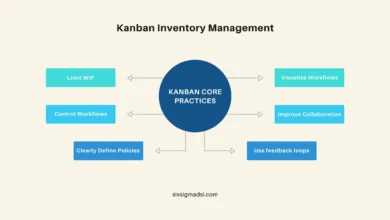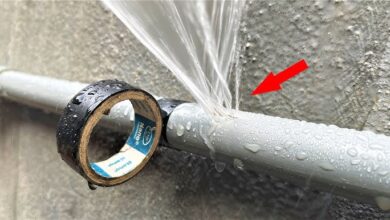The Importance of Design in Wine Bottle Labels

When someone’s trying to select the perfect bottle of wine, labels can be the deciding factor. After all, not everyone has a go-to brand or profile among wines. Much like book covers, wine labels can be the persuasive element.
Whether you’re a wine enthusiast or winemaker, it pays to know about the power of design in wine bottle labels. Read on to learn more!
Create a Classic Design
Classic wine bottle designs never go out of style. And for winemakers hoping their bottles will become respected heavyweights in the wine industry, a classic wine bottle label is a safe choice. These labels are an elegant and trusted choice for anyone shopping for that perfect bottle.
Classic wine bottle labels tend to feature an image surrounded by text on the top and bottom. The text may be scrolly and ornate, while the image will depict a quaint vineyard scene or landscape. Text will be refined and not overly blocky or aggressive.
Some wineries may have insignias they insert into the design for an even more regal appearance. The backside of the label may include more detailed descriptions of the wine’s flavor notes or the winery’s history.
Even with a more classic approach to design, customizable wine labels let winemakers put their own spin on tradition. Some wineries update the classic design with less text and more contrast. While others may update the muted color schemes of traditional wine bottle labels with ones that are bolder.
For consumers, classic wine bottle labels look prestigious. Even if someone is on a budget, they can buy a less expensive bottle of wine that makes a good first impression if it has a classic label. And for those who drink wine infrequently, a classic wine bottle label will always be a strong selling point.
Be Humorous or Trendy
Some of today’s bottle label designs have taken a more humorous approach. This may be geared toward attracting a younger audience. And it can help make enjoying a bottle of wine feel less pretentious for those who don’t know a lot about wine.
Humorous designs might make a playful title front and center on the label. Dark text against a light background can be an effective way to highlight humorous words.
A funny title or teasing one-liner can catch someone’s eye among other more sedate labels at a store. Text isn’t the only way to do this, either. Cartoon characters or illustrations create a funnier, approachable vibe that can be appealing to consumers.
Another trendy approach to designing a wine label is to use photography. While classic labels may use paintings or more traditional ways of image-making, some winemakers have reached for the clarity and modern style of photography.
A good photograph and a savvy designer will be essential to make this type of label work. But in the right hands, a photography-infused label can look fresh and clean – and different. Photography is ideal for creating a personalized wine label with imagery connected to the winemaker or winery.
Designers can apply filters to photographs or remove elements to let certain shapes, people, or elements shine. With some text spliced in creatively, you’ll have a clever label that will make consumers intrigued.
Go Abstract
Abstract wine label designs can make a strong impression from afar. That’s because many abstract designs prioritize unique and varied fonts set against bold colors or patterns. Abstract designs are impossible to define, so they’re a great choice to reflect the flavors and intensity of a given wine.
Some abstract labels use textured paintbrush strokes for an artsy style. Others opt for a bold and clean color to do most of the work or let a pattern dominate the label. Any of these approaches create a modern visual style that will dress up any dinner table.
You may find different typefaces together, or a very minimal use of text. Descriptions of flavor notes may be pared down to a few choice words or phrases. Color and texture will be the stars of the show on an abstract label.
For individuals hoping to find a wine for an evening with friends, an abstract wine bottle label can be a selling point. Bold colors and patterns will look striking without being too ornate or stuffy. Abundant negative space can make abstract wine labels feel anything but overwhelming.
And for casual wine drinkers, this abstract sense of style can encourage a pour. Not everyone feels comfortable reaching for a wine bottle at a dinner party. But when the art on the label is simple, it feels more accessible.
Consider the Bottle Label Shape
Lastly, regardless of what design style a winemaker chooses, the label and bottle shapes need to factor into the equation. Will the wine bottle be a traditional, familiar shape? Or will it be something distinctive and unique?
Ovals, squares, and rectangles tend to be the most popular label shapes. These shapes are balanced and serve as strong frames for any design.
But a wine label doesn’t need to be the standard rectangle or oval shape. Organic edges or irregular shapes have become popular choices to help draw attention from consumers. Especially on a darker bottle, a splashy or angular shape in a lighter color, for instance, would emerge from the pack.
Wine label shapes like ovals and rectangles will suit traditional label designs or modern ones. Humorous designs can fit just about any shape, as well.
An abstract design on a splashy and asymmetrical label shape, for instance, could be a winning pairing. A symmetrical shape with subtle embellishments around the edges could work well with a more traditional design scheme.
Choose the Best Wine Bottle Labels
Good wine bottle labels seamlessly blend vital content with winning designs. Abstract designs are visually appealing and elegant, while humorous labels can make wine feel more accessible. Classic wine bottle labels are always a safe bet, and integrating photography into designs can make labels feel fresh and modern.
Find more information about food and beverage branding. Check back soon for new articles!




